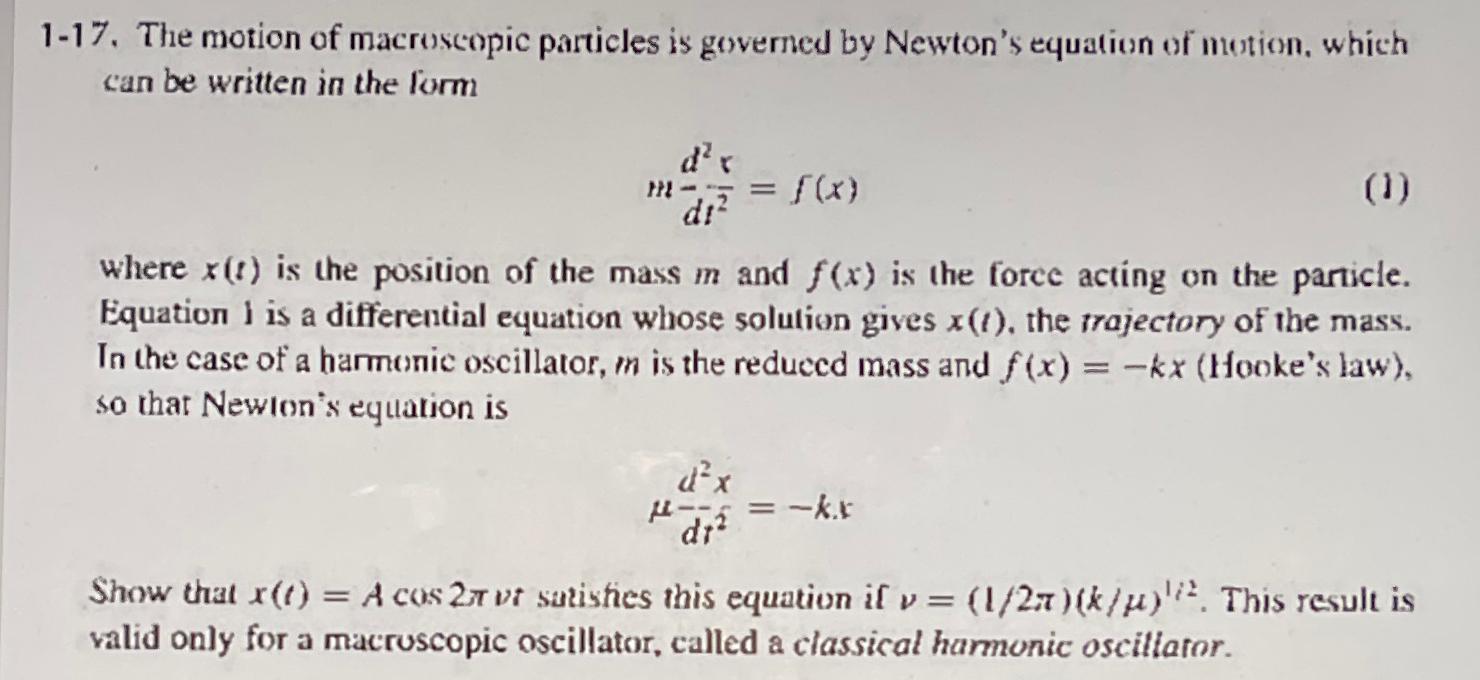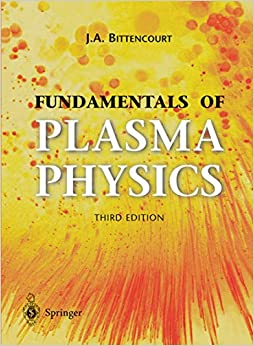Question
1-17. The motion of macroscopic particles is governed by Newton's equation of motion, which can be written in the form dx m = f(x)

1-17. The motion of macroscopic particles is governed by Newton's equation of motion, which can be written in the form dx m = f(x) di (1) where x(t) is the position of the mass m and f(x) is the force acting on the particle. Equation 1 is a differential equation whose solution gives x(t), the trajectory of the mass. In the case of a harmonic oscillator, m is the reduced mass and f(x) = -kx (Hooke's law), so that Newton's equation is H- dx = -k.x di Show that x(t) = A cos 2 vt satisfies this equation if v = (1/2)(k/u). This result is valid only for a macroscopic oscillator, called a classical harmonic oscillator.
Step by Step Solution
There are 3 Steps involved in it
Step: 1

Get Instant Access to Expert-Tailored Solutions
See step-by-step solutions with expert insights and AI powered tools for academic success
Step: 2

Step: 3

Ace Your Homework with AI
Get the answers you need in no time with our AI-driven, step-by-step assistance
Get StartedRecommended Textbook for
Fundamentals Of Plasma Physics
Authors: J. A. Bittencourt
3rd Edition
0387209751, 9780387209753
Students also viewed these Physics questions
Question
Answered: 1 week ago
Question
Answered: 1 week ago
Question
Answered: 1 week ago
Question
Answered: 1 week ago
Question
Answered: 1 week ago
Question
Answered: 1 week ago
Question
Answered: 1 week ago
Question
Answered: 1 week ago
Question
Answered: 1 week ago
Question
Answered: 1 week ago
Question
Answered: 1 week ago
Question
Answered: 1 week ago
Question
Answered: 1 week ago
Question
Answered: 1 week ago
Question
Answered: 1 week ago
Question
Answered: 1 week ago
Question
Answered: 1 week ago
Question
Answered: 1 week ago
Question
Answered: 1 week ago
Question
Answered: 1 week ago
Question
Answered: 1 week ago
Question
Answered: 1 week ago
View Answer in SolutionInn App



